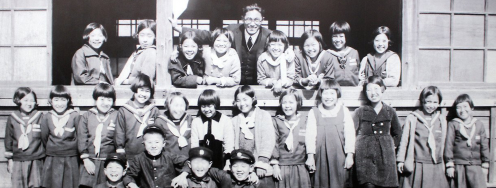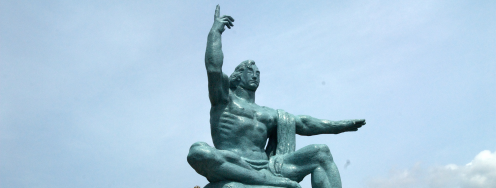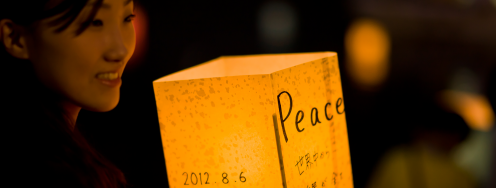A first hand account: Hiroshima and Nagasaki after the bomb
In 1945, Ploughshares Fund supporter Reid Dennis was sent by the Navy to Japan. While there he visited both Hiroshima and Nagasaki shortly after their bombing. Reid has kindly shared his remembrances of that visit with us, below.
I volunteered for the U.S. Navy in May 1944, just before my 18th birthday. I had been accepted for a training program to become a radio or radar technician. In June, literally the day after graduating from high school, I was on a troop train headed for Great Lakes Naval Training Base near Chicago. Basic training together with the technical training program kept me busy for the next thirteen months with the last month being devoted to LORAN, a new Long Range Navigation system that was highly classified.
After training, I was based at the Naval Repair Station in San Diego. One or two days after "VJ" Day in August 1945, I received orders to report on board the U.S.S. Baltimore, a Heavy Cruiser, in Long Beach harbor. They needed a LORAN technician. I went on board one evening, and we sailed for Japan early the next morning! We did not stop en-route and were refueled at sea. We went straight to Japan, into the Inland Sea and on to Kure which was about 20 miles from Hiroshima. Kure, at some point, had been the largest operational naval base in the world, but it was now completely devastated.
In October, the Navy began sending voluntary "sight-seeing" trips down to Hiroshima in landing craft. No one knew anything about residual radiation. We were free to roam about in the rubble and pick up anything that looked interesting. I remember climbing over blocks of fallen masonry inside the steel frame of a building that has now been turned into a shrine.They had cleared the rubble out of some of the main streets, but all of the cross streets were still blocked. The devastation was horrific, but so was the devastation in Kure and other nearby communities. We were used to devastation. The only big difference was that Hiroshima was the result of one "big" bomb.
Our reaction to our visit to Nagasaki some weeks later was much the same. "One bomb did all of this?"
What is incomprehensible today is that the nuclear bombs of today are 1,000 times more powerful than the ones that were used in 1945. If that is true, then the world cannot afford to have even one more such device explode. It would be the beginning of the end of the world as we know it.
Reid and his wife Peggy became involved with Ploughshares Fund in 1983 at the gentle persistence of founder Sally Lilienthal. According to Reid, they “take satisfaction from having supported the organization from the very early days when relatively modest contributions were nevertheless very important.”
Check out Reid’s photos from his visit to Hiroshima and Nagasaki in our slideshow, above. Then, help Ploughshares Fund commemorate the 67th anniversary of the bombings by folding a paper crane for peace.



